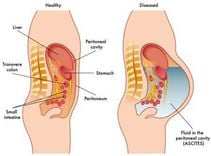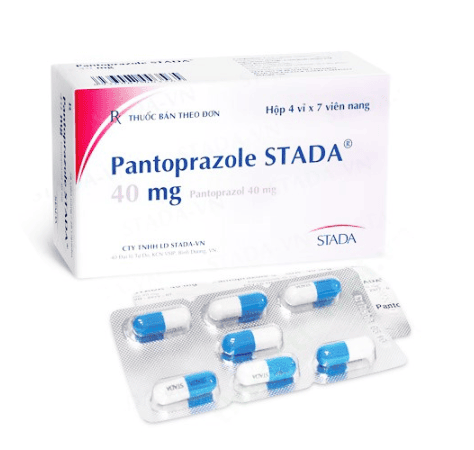Home remedies for peptic ulcers are of high interest to many, especially when eating at irregular hours, not receiving enough nutrition, or experiencing high levels of stress have become more prevalent. Knowing home remedies helps patients to manage their symptoms before seeking medical help
1. When to use home remedies for peptic ulcers
Peptic ulcers do not present with clear symptoms in the early stages of the disease, with many patients only learning of their condition after experiencing complications such as GI bleeding, or pyloric stenosis.
Depending on overall health, how much damage has been done to the stomach, and symptoms experienced, patients may apply home remedies to relieve symptoms. However, home remedies should be preceded by seeing a physician for a thorough examination. If symptoms are not serious, such as mild epigastric pain, heartburn, belching, poor appetite or feeling bloated, home remedies can be applied for symptom relief. However, if symptoms are severe or worsen over time, such as severe pain affecting quality of life, patients are advised to seek medical attention promptly. A physician may conduct clinical examination and use laboratory values to determine the appropriate treatment for the patient.
2. Home remedies
2.1 Hot compress
A hot compress is effective and widely used for pain relief in peptic ulcer. There are two ways to apply this
Hot compress with water: soak a highly absorbent towel thoroughly in warm water, squeeze the water out and then apply to the area with pain, repeat 2-3 times.
Hot compress with salt: heat up salt in a hot pan, wrap in a towel, then apply to the area with pain.
A hot compress can be repeated a few times a day, and can relieve symptoms by increasing blood circulation in the area with pain. This is a quick, easy and inexpensive method for pain relief, and does not require taking pain medication. Avoid using too much heat to prevent burns.
2.2 Abdominal massage
Patients with peptic ulcers have increased acid production in the stomach which causes symptoms such as abdominal pain, nausea, poor appetite, feeling bloated, and heartburn. A gentle massage on the abdomen can help relieve these symptoms.
Patients can simply use their hand and massage the abdomen gently in a clockwise direction. Warming the hands before starting the massage can improve the massage. Essential oil scents like eucalyptus, cinnamon, ect can also be used as these oils have anti-inflammatory and pain-relieving properties. Pain relief should occur within 5 minutes.
2.3 Pain relief with ginger
More than just a kitchen spice, ginger is known medicinally for its anti-inflammatory and anti-microbial properties. Regular use of ginger can alleviate epigastric pain or discomfort caused by peptic ulcers by reducing oxidative stress in the body. Here’s how to apply it:
- Recipe 1: Drink tea infused with freshly sliced ginger during the morning and evening. Both tea and ginger can reduce oxidative stress, inflammation and improve symptoms.
- Recipe 2: clean, peel and crush ginger for the extract. Mix the extract with warm water then drink, add lime juice and honey as desired to improve the taste. Use this recipe in the morning before breakfast for the best result
2.4 Honey & turmeric
Curcumin found in turmeric is known to reduce stomach acid production, and inhibit the growth of H.pylori. In addition, turmeric can increase mucus production in the stomach, which can protect its lining from stomach acid. This reduces contact between acid and ulcers, making epigastric pain less severe and aids in digestion
Honey can improve immunity, reduce inflammation, provide nutrition and an-inflammatory benefits for the body. Honey is known to be rich in vitamin B, C and minerals like phosphorus, sodium, iron, potassium, calcium, and zinc.
Use of honey & turmeric not only relieves symptoms, but also improves immunity, thus improving overall health. Here are two recipes
Mix honey and turmeric in such a ratio to form a viscous mix. This mix can be rolled into small capsules that can be taken 2-3 times a day, at 2 capsules each time.
Mix 10g of turmeric with 100ml of warm water, add a few teaspoons of honey. For best result, take before meals 2-3 times a day
2.5. Perilla leaves
Perilla leaves are rich in glycoside and tannin, which can reduce acid production and aid in ulcer healing. Wash perilla leaves, boil them in hot water, let chill and drink as needed. Perilla leaves can be used fresh or dried.
2.6 Aloe vera
Aloe vera can improve constipation, reduce stomach acid production and speed up ulcer healing. Here is how to use aloe vera as a home remedy
Wash and extract the flesh from fresh aloe vera
Extract aloe vera juice from the flesh, drink 2 two times a day
Continue to use aloe vera for 2-3 weeks to see improvement in symptoms
2.7 Fresh cabbage juice
Fresh cabbage contains lactic acid, which can relieve symptoms by improving blood flow to the ulcerated area. This can relieve pain and speed up ulcer healing. Fresh cabbage is also rich in vitamin C, which can protect against H.pylori - a common cause of ulcers.
Here is how to use fresh cabbage as a home remedy. Wash and slice fresh cabbage, then make into a smoothie or juice. Regular consumption of fresh cabbage before meals can relieve symptoms
2.8 Banana
Banana is known as a useful home remedy for ulcers because it is known to increase development of cells in the stomach lining, which speed up ulcer healing
Bananas, either yellow or green, are known to have some antimicrobial properties, which can inhibit H.pylori, a bacterium that causes ulcers. Consumption of 2-3 bananas daily can relieve symptoms. The banana peel can also be dried, crushed into a powder and mix with honey at a ratio of 2:1 (teaspoons). Consumption of this mixture daily at 3 times a day can also relieve symptoms
2.9 Garlic
Garlic is rich in sulfur, which has anti-oxidative and anti-microbial properties, especially against H.pylori. Consume 2-3 cloves with garlic as part of daily meals and drink plenty of water to relieve ulcer symptoms
2.10 Licorice root
Root of licorice contains glycyrrhizin. On conversion to glycyrrhetinic acid, it can inhibit H.pylori, a cause of ulcers. Licorice root can also increase mucus production which protects the stomach lining, and prevent formation of ulcers
Dissolve licorice root powder in water, add honey as desired and drink daily to relieve symptoms. However, patients with hypertension should avoid this method as licorice root can increase blood pressure
2.11 Coconut milk/ coconut water
Coconut water and coconut products are known to have anti-microbial properties, and can be used for treatment of ulcers. Research indicates that ethanol from coconut water can prevent ulcers cause by NSAID use
To improve symptoms of ulcers, use fresh coconut water or coconut milk as part of daily diet. Take a spoon of coconut oil in the morning and evening weekly to aid in digestion and relieve symptoms
3. Caution when using home remedies
To effectively relieve symptoms at home, a healthy lifestyle and diet is of great importance:
- Avoid eating too quickly or too much, or eating at irregular hours
- Avoid lying down or physical exertion after meals
- Avoid food items that can worsen symptoms, such as: fatty dishes, spicy dishes, alcoholic or carbonated drinks.
- Smoking cessation can help protect the stomach and prevent lung problems
- Increase consumption of bread, sweet potato, yoghurt, whole grains, cabbage and apple to reduce stomach acid
- Exercise regularly to improve overall health
Even though home remedies are simple, inexpensive and easy to follow, they only relieve symptoms temporarily and do not address the root cause of ulcers. As a result, when suspecting stomach ulcer, it is recommended that medical help be sought for appropriate diagnosis and treatment. Home remedies can be used with treatment to improve efficacy.
To arrange an appointment, please call HOTLINE or make your reservation directly HERE. You may also download the MyVinmec app to schedule appointments faster and manage your reservations more conveniently.













